Construction step change boosts order books
29 April 2024
Using data from regional projects tracker MEED Projects, the region’s most active contractor is Nesma & Partners, with $14.7bn of work at the execution stage. In 2023, the Saudi Arabia-based contractor topped the ranking with $5.3bn of work in execution, a total that would not even make the top 10 this year. Dubai-based Alec ranks 10th this year with $6bn of work under execution.
Five Saudi-based contractors are in the top 10, reflecting the volume of construction work under way in the kingdom. Four of them are the contractors that the Public Investment Fund (PIF) invested in – Al Bawani, Almabani, El Seif and Nesma. The other is Shibh Al Jazira Contracting.
Two UAE-based companies, Trojan General Contracting and Alec, are in the top 10. While not as active as Saudi Arabia, the UAE market remains a crucial construction market, even though it is increasingly dominated by contractors with government or government-related shareholders.
The other three contractors are Turkiye’s Limak, which is working extensively in Kuwait; Italy’s Webuild, which has won a series of major orders in Saudi Arabia in the past three years; and Beijing-based China State Construction Engineering Corporation (CSCEC), which works across the GCC and is the world’s third most active contractor, according to GlobalData’s ranking of global construction companies.
Volume of work
With a clear shift in the volume of work being undertaken, only five of the companies from 2023 remain in the top 10 this year. They are Nesma, Limak, Almabani, Webuild and CSCEC. Dropping out the top 10 are Saudi Arabia’s Alfanar Construction, Saudi Binladin Group – which was consistently the region’s most active contractor for many years – India’s Shapooorji Pallonji, Beijing-based China Harbour Engineering Corporation and Saudi Arabian Baytur.
With large contracts still being tendered in Saudi Arabia, it is likely that there will also be significant changes to next year’s ranking. The four contractors that the PIF invested in will likely continue to dominate, while other players will also look to take advantage of the work available in the kingdom and move up the rankings.
With large contracts still being tendered in Saudi Arabia, it is likely that there will also be significant changes to next year’s ranking
This will include other local players, as Shibh Al Jazira has demonstrated in 2024, and international companies that are looking to build their order books – just as Webuild has done in recent years.
As contractors pick up more work, there are nascent concerns that you can have too much of a good thing. Companies that grow rapidly become more difficult to manage and experience has shown that when markets correct, organisations that tempered their ambitions are more manageable and resilient, and are the ones more likely to survive.
Bahrain
Bahrain’s contractor ranking has remained largely static this year. The top two contractors have not changed and only one company has joined the top 10 this year.
China Machinery Engineering Corporation maintains its lead position with $698m of work in the execution phase, thanks to its contract to build the East Sitra development for the housing ministry. Al Hamad Building Contracting is in second place, with $560m-worth of projects in the execution phase.
Nass Contracting is in third place, having moved up from fifth last year. Kooheji Contractor, which was ranked third last year, is now fourth.
The rest of the ranking remains largely the same, with Saleh Abdullah Al Muhanna & Partners replacing Al Taitoon Contracting in the top 10.
The relative lack of change to the Bahraini ranking reflects the quiet market conditions in the country when compared to the larger GCC markets.
This is largely due to major projects such as the new terminal building at Bahrain International airport having been completed and tendering and contract awards not yet having started for major new projects, including the first phase of the Bahrain metro network and the second causeway connecting to Saudi Arabia.
Kuwait
Turkiye’s Limak Holding has strengthened its position at the top of Kuwait’s ranking this year. The contractor has $5.6bn of construction work at the execution stage, according to MEED Projects. This is about $600m more than the $5bn it had when it headed the 2023 ranking.
Limak’s work in execution was boosted last year when the Public Works Ministry awarded it more construction work at Kuwait International airport. It secured a contract for package three of the expansion of Terminal 2, which covers the construction of aircraft parking aprons, taxiways and service buildings.
In joint second place is Shapoorji Pallonji with $1.4bn of work at the execution stage. The Indian contractor is working on two healthcare projects and one education scheme in a joint venture with the local Al Sager General Trading & Contracting, which is also working on $1.4bn of projects at the execution stage.
The only other non-Kuwaiti contractor in the top 10 is China Gezhouba Group Corporation, which is in fourth place with $1.3bn of projects at the execution stage. Its largest project is the infrastructure works at South Saad Al Abdullah Residential City.
Oman
The local Galfar Engineering & Contracting remains at the top of the Oman ranking in 2024, with about $900m of construction and transport projects at the execution stage, according to MEED Projects. The contractor’s total is slightly less than the $1.1bn it recorded last year.
Several key changes have occurred in the Omani top 10 this year. Local contractor Saif Salim Essa Al Harasi & Company has moved into fourth place thanks to several major contract awards.
In December last year, it secured a $118m contract for the construction of a hospital, and in October it was awarded a design-and-build contract for a cultural complex. The cultural complex was won as part of a joint venture with Turkish contractor Sembol Construction, which has also moved into the top 10 in seventh position.
Another contractor that has moved into Oman’s top 10 is China Communications Construction Company. In January, it secured a marine works contract at the Yiti Sustainable City project.
Qatar
Two contractors top the Qatar ranking in 2024 with $1.4bn of ongoing projects each. Turkish contractor TAV Construction and the local Midmac Contracting Company both lead, largely due to their ongoing work at Hamad International airport.
Closely behind, in third position, is the local Generic Engineering Technologies, which is working on several projects in Qatar, including the upgrade of the Lusail Formula 1 and MotoGP race circuit.
Urbacon Trading & Contracting, which topped last year’s ranking with $1.8bn of projects at the execution stage, is in fifth place this year with $1.2bn of projects. The contractor has taken significant strides in the past year to win work in other markets, including Saudi Arabia.
Saudi Arabia
There has been a major shift in the level of construction activity undertaken by the 10 most active contractors in Saudi Arabia in 2024.
This year, the total value of projects undertaken by the top 10 contractors is $71.5bn, more than a 130% increase from the $31bn recorded by the top 10 in 2023.
The local Nesma & Partners tops the Saudi ranking again this year with $14.7bn-worth of projects at the execution stage. The total, which is about 50% more than that of the second-ranked contractor, highlights Nesma’s leading position in the Saudi market, and the scale of the opportunities that the kingdom’s projects sector now offers.
In second position is Italy’s Webuild with just short of $10bn of projects at the execution stage. Earlier this year, it secured a $4.7bn contract to construct dams at the Trojena mountain resort in Neom, adding to other major orders at Neom and Diriyah.
The four contractors that received investment from the PIF in 2023 now occupy four out of the top six positions in the
Saudi Ranking. They are Nesma, El Seif, Al Bawani and Almabani.
UAE
The UAE’s construction market has grown strongly over the past year, and this is reflected in the 2024 contractor ranking. Like Saudi Arabia, the top 10 UAE contractors have more than doubled the total value of projects they have at the execution stage. This year, the top 10 have $27.6bn of work, which is a 123% increase from the $12.4bn last year.
The top-ranked contractor in the UAE this year is Trojan General Contracting, which is part of Alpha Dhabi. In April, Alpha Dhabi Holding agreed to sell a 49% stake in its construction subsidiary Alpha Dhabi Construction Holding (ADCH) to local investment firm ADQ. Trojan is part of ADCH.
With $6.2bn of projects at the execution stage, Trojan is ahead of National Marine Dredging Company (NMDC), which has $3.1bn of work. NMDC topped last year’s ranking with $2.3bn of projects.
In third place is UK-headquartered Innovo, with $3bn of projects, followed by Dubai-based Alec with $2.6bn.
Contractors need to grow quickly to maintain their rankings. Al Amry Transport & General Contracting has moved down to fifth place from fourth, even though it more than doubled the value of its projects at the execution stage. China State Construction Engineering Corporation has also dropped in the ranking, from third to sixth place, despite increasing its value of projects to $2.4bn from $1.6bn.
Exclusive from Meed
-
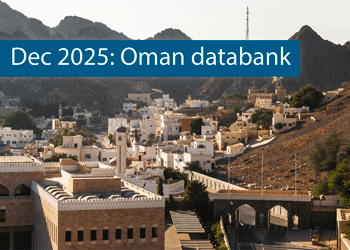 Oman’s growth forecast points upwards
Oman’s growth forecast points upwards24 December 2025
-
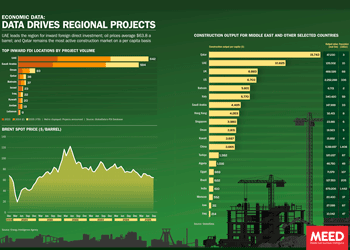 December 2025: Data drives regional projects
December 2025: Data drives regional projects23 December 2025
-
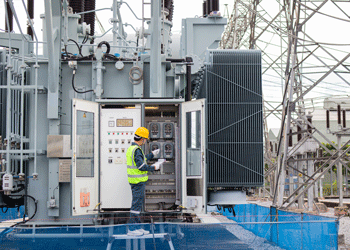 Local firm bids lowest for Kuwait substation deal
Local firm bids lowest for Kuwait substation deal22 December 2025
-
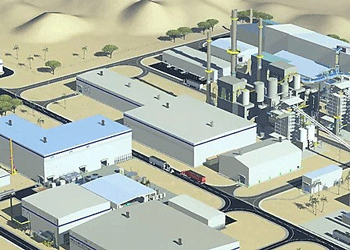 Saudi-Dutch JV awards ‘supercentre’ metals reclamation project
Saudi-Dutch JV awards ‘supercentre’ metals reclamation project22 December 2025
-
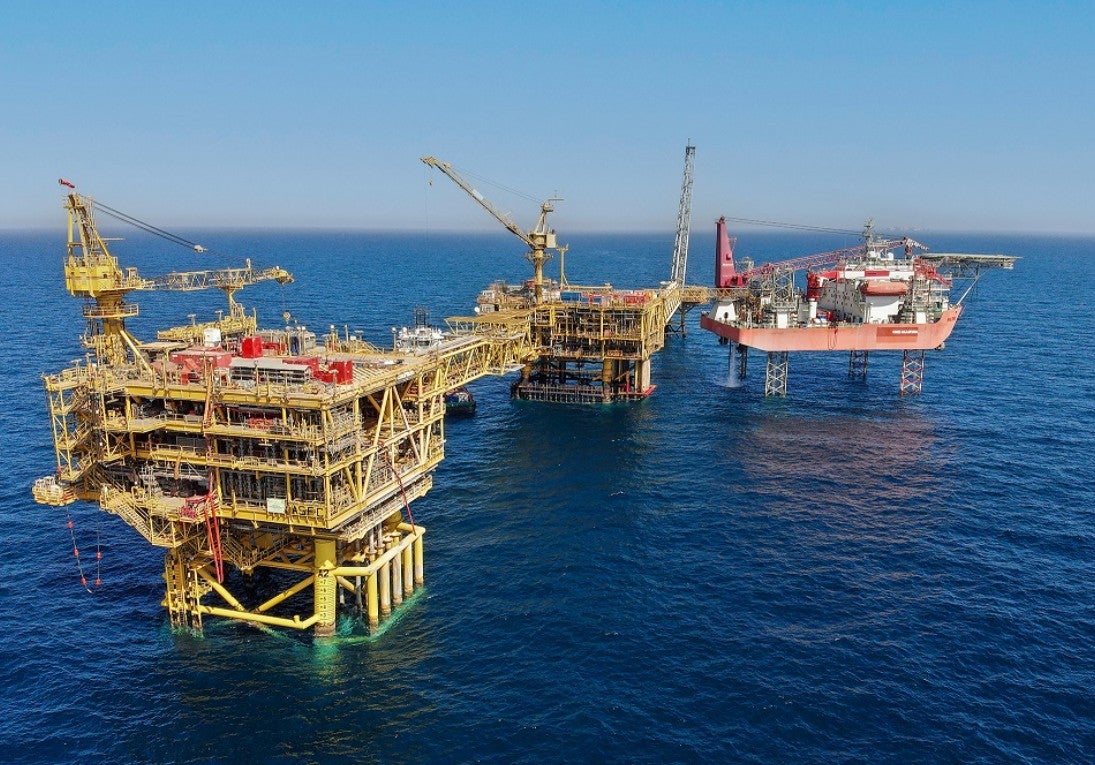 QatarEnergy LNG awards $4bn gas project package
QatarEnergy LNG awards $4bn gas project package22 December 2025
All of this is only 1% of what MEED.com has to offer
Subscribe now and unlock all the 153,671 articles on MEED.com
- All the latest news, data, and market intelligence across MENA at your fingerprints
- First-hand updates and inside information on projects, clients and competitors that matter to you
- 20 years' archive of information, data, and news for you to access at your convenience
- Strategize to succeed and minimise risks with timely analysis of current and future market trends

Related Articles
-
 Oman’s growth forecast points upwards
Oman’s growth forecast points upwards24 December 2025

MEED’s January 2026 report on Oman includes:
> COMMENT: Oman steadies growth with strategic restraint
> GVT & ECONOMY: Oman pursues diversification amid regional concerns
> BANKING: Oman banks feel impact of stronger economy
> OIL & GAS: LNG goals galvanise Oman’s oil and gas sector
> POWER & WATER: Oman prepares for a wave of IPP awards
> CONSTRUCTION: Momentum builds in construction sectorTo see previous issues of MEED Business Review, please click herehttps://image.digitalinsightresearch.in/uploads/NewsArticle/15306449/main.gif -
 December 2025: Data drives regional projects
December 2025: Data drives regional projects23 December 2025
Click here to download the PDF
Includes: Top inward FDI locations by project volume | Brent spot price | Construction output
MEED’s January 2026 report on Oman includes:
> COMMENT: Oman steadies growth with strategic restraint
> ECONOMY: Oman pursues diversification amid regional concerns
> BANKING: Oman banks feel impact of stronger economy
> OIL & GAS: LNG goals galvanise Oman’s oil and gas sector
> POWER & WATER: Oman prepares for a wave of IPP awards
> CONSTRUCTION: Momentum builds in construction sectorTo see previous issues of MEED Business Review, please click herehttps://image.digitalinsightresearch.in/uploads/NewsArticle/15306140/main.gif -
 Local firm bids lowest for Kuwait substation deal
Local firm bids lowest for Kuwait substation deal22 December 2025
The local Al-Ahleia Switchgear Company has submitted the lowest price of KD33.9m ($110.3m) for a contract to build a 400/132/11 kV substation at the South Surra township for Kuwait’s Public Authority for Housing Welfare (PAHW).
The bid was marginally lower than the two other offers of KD35.1m and KD35.5m submitted respectively by Saudi Arabia’s National Contracting Company (NCC) and India’s Larsen & Toubro.
PAHW is expected to take about three months to evaluate the prices before selecting the successful contractor.
The project is one of several transmission and distribution projects either out to bid or recently awarded by Kuwait’s main affordable housing client.
This year alone, it has awarded two contracts worth more than $100m for cable works at its 1Z, 2Z, 3Z and 4Z 400kV substations at Al-Istiqlal City, and two deals totalling just under $280m for the construction of seven 132/11kV substations in the same township.
Most recently, it has tendered two contracts to build seven 132/11kV main substations at its affordable housing project, west of Kuwait City. The bid deadline for the two deals covering the MS-01 through to MS-08 substations is 8 January.
https://image.digitalinsightresearch.in/uploads/NewsArticle/15305745/main.gif -
 Saudi-Dutch JV awards ‘supercentre’ metals reclamation project
Saudi-Dutch JV awards ‘supercentre’ metals reclamation project22 December 2025
The local Advanced Circular Materials Company (ACMC), a joint venture of the Netherlands-based Shell & AMG Recycling BV (SARBV) and local firm United Company for Industry (UCI), has awarded the engineering, procurement and construction (EPC) contract for the first phase of its $500m-plus metals reclamation complex in Jubail.
The contract, estimated to be worth in excess of $200m, was won by China TianChen Engineering Corporation (TCC), a subsidiary of China National Chemical Engineering Company (CNCEC), following the issue of the tender in July 2024.
Under the terms of the deal, TCC will process gasification ash generated at Saudi Aramco’s Jizan refining complex on the Red Sea coast to produce battery-grade vanadium oxide and vanadium electrolyte for vanadium redox flow batteries. AMG will provide the licensed technology required for the production process.
The works are the first of four planned phases at the catalyst and gasification ash recycling ‘Supercentre’, which is located at the PlasChem Park in Jubail Industrial City 2 alongside the Sadara integrated refining and petrochemical complex.
Phase 2 will expand the facility to process spent catalysts from heavy oil upgrading facilities to produce ferrovanadium for the steel industry and/or additional battery-grade vanadium oxide.
Phase 3 involves installing a manufacturing facility for residue-upgrading catalysts.
In the fourth phase, a vanadium electrolyte production plant will be developed.
The developers expect a total reduction of 3.6 million metric tonnes of carbon dioxide emissions a year when the four phases of the project are commissioned.
SARBV first announced its intention to build a metal reclamation and catalyst manufacturing facility in Saudi Arabia in November 2019. The kingdom’s Ministry of Investment, then known as the Saudi Arabian General Investment Authority (Sagia), supported the project.
In July 2022, SARBV and UCI signed the agreement to formalise their joint venture and build the proposed facility.
The project has received support from Saudi Aramco’s Namaat industrial investment programme. Aramco, at the time, also signed an agreement with the joint venture to offtake vanadium-bearing gasification ash from its Jizan refining complex.
Photo credit: SARBV
https://image.digitalinsightresearch.in/uploads/NewsArticle/15305326/main.gif -
 QatarEnergy LNG awards $4bn gas project package
QatarEnergy LNG awards $4bn gas project package22 December 2025
QatarEnergy LNG, a subsidiary of state-owned QatarEnergy, has awarded the main engineering, procurement, construction and installation (EPCI) contract for a major package for the second phase of its North Field Production Sustainability (NFPS) project.A consortium comprising the Italian contractor Saipem and state-owned China Offshore Oil Engineering Company (COOEC) has secured the EPCI contract for the COMP5 package. The contract value is $4bn, with Saipem declaring its share to be worth $3.1bn.
Milan-headquartered Saipem said the contract will run for about five years. The scope of work comprises engineering, procurement, fabrication and installation of two compression complexes, each including a compression platform, a living quarters platform, a flare platform supporting the gas combustion system, and the related interconnecting bridges. Each complex will have a total weight of about 68,000 tonnes.
Offshore installation operations will be carried out by Saipem’s De He construction vessel in 2029 and 2030.
MEED previously reported that the following contractors submitted bids for the NFPS phase two COMP5 package:
- Larsen & Toubro Energy Hydrocarbon (India)
- McDermott (US)
- Saipem/China Offshore Oil Engineering Company (Italy/China)
QatarEnergy LNG, formerly Qatargas, is said to have issued the tender for the NFPS phase two COMP5 package in the first quarter of the year.
Contractors submitted technical bids for the COMP5 package in late June, while commercial bids were submitted by 8 October, as per sources.
Based upon initial evaluation of bids by QatarEnergy LNG, L&TEH has emerged as the lowest bidder for the COMP5 package, followed by McDermott, with the consortium of Saipem and COOEC in third place, MEED reported in late October.
In the weeks following that, the project operator is said to have engaged all bidders for a final round of negotiations, during which the consortium of Saipem and COOEC is believed to have “clinched the deal”, according to sources.
The detailed scope of work on the COMP5 package covers the EPCI work on the following:
- Two gas compression platforms, each weighing 30,000-35,000 tonnes, plus jacket
- Two living quarters platforms, plus jacket
- Two gas flare platforms, plus jacket
- Brownfield modification work at two complexes
NFPS scheme
QatarEnergy’s North Field liquefied natural gas (LNG) expansion programme requires the state enterprise to pump large volumes of gas from the North Field offshore reserve to feed the three phases of the estimated $40bn-plus programme.
QatarEnergy has already invested billions of dollars in engineering, procurement and construction works on the two phases of the NFPS project, which aims to maintain steady gas feedstock for the North Field LNG expansion phases.
The second NFPS phase will mainly involve building gas compression facilities to sustain and gradually increase gas production from Qatar’s offshore North Field gas reserve over the long term.
Saipem has been the most successful contractor on the second NFPS phase, securing work worth a total of $8.5bn.
QatarEnergy LNG awarded Saipem a $4.5bn order in October 2022 to build and install gas compression facilities. The main scope of work on the package, which is known as EPCI 2, covers two large gas compression complexes that will comprise decks, jackets, topsides, interconnecting bridges, flare platforms, living quarters and interface modules.
The gas compression complexes – CP65 and CP75 – will weigh 62,000 tonnes and 63,000 tonnes, respectively, and will be the largest fixed steel jacket compression platforms ever built.
Following that, Saipem won combined packages COMP3A and COMP3B of the NFPS project’s second phase in September last year.
The scope of work on the combined packages encompasses the EPCI of a total of six platforms, approximately 100 kilometres (km) of corrosion resistance alloy rigid subsea pipelines of 28-inches and 24-inches diameter, 100km of subsea composite cables, 150km of fibre optic cables and several other subsea units.
Separately, QatarEnergy LNG awarded McDermott the contract for the NFPS second phase package known as EPCI 1, or COMP1, in July 2023. The scope of work on the estimated $1bn-plus contract is to install a subsea gas pipeline network at the North Field gas development.
In March this year, India’s Larsen & Toubro Energy Hydrocarbon (LTEH) won the main contract for the combined 4A and 4B package, which is the fourth package of the second phase of the NFPS project and is estimated to be valued at $4bn-$5bn.
The main scope of work on the package is the EPCI of two large gas compression systems that will be known as CP8S and CP4N, each weighing 25,000-35,000 tonnes. The contract scope also includes compression platforms, flare gas platforms and other associated structures.
LTHE sub-contracted detailed engineering and design works on the combined 4A and 4B package to French contractor Technip Energies.
NFPS first phase
Saipem is also executing the EPCI works on the entire first phase of the NFPS project, which consists of two main packages.
Through the first phase of the NFPS scheme, QatarEnergy LNG aims to increase the early gas field production capacity of the North Field offshore development to 110 million tonnes a year.
QatarEnergy LNG awarded Saipem the contract for the EPCI package in February 2021. The package is the larger of the two NFPS phase one packages and has a value of $1.7bn.
Saipem’s scope of work on the EPCI package encompasses building several offshore facilities for extracting and transporting natural gas, including platforms, supporting and connecting structures, subsea cables and anti-corrosion internally clad pipelines.
The scope of work also includes decommissioning a pipeline and other significant modifications to existing offshore facilities.
In addition, in April 2021, QatarEnergy LNG awarded Saipem two options for additional work within the EPCI package, worth about $350m.
QatarEnergy LNG awarded Saipem the second package of the NFPS phase one project, estimated to be worth $1bn, in March 2021.
Saipem’s scope of work on the package, which is known as EPCL, mainly covers installing three offshore export trunklines running almost 300km from their respective offshore platforms to the QatarEnergy LNG north and south plants located in Ras Laffan Industrial City.
Saipem performed the front-end engineering and design work on the main production package of the first phase of the NFPS as part of a $20m contract that it was awarded in January 2019. This provided a competitive advantage to the Italian contractor in its bid to win the package.
https://image.digitalinsightresearch.in/uploads/NewsArticle/15305330/main2239.jpg

